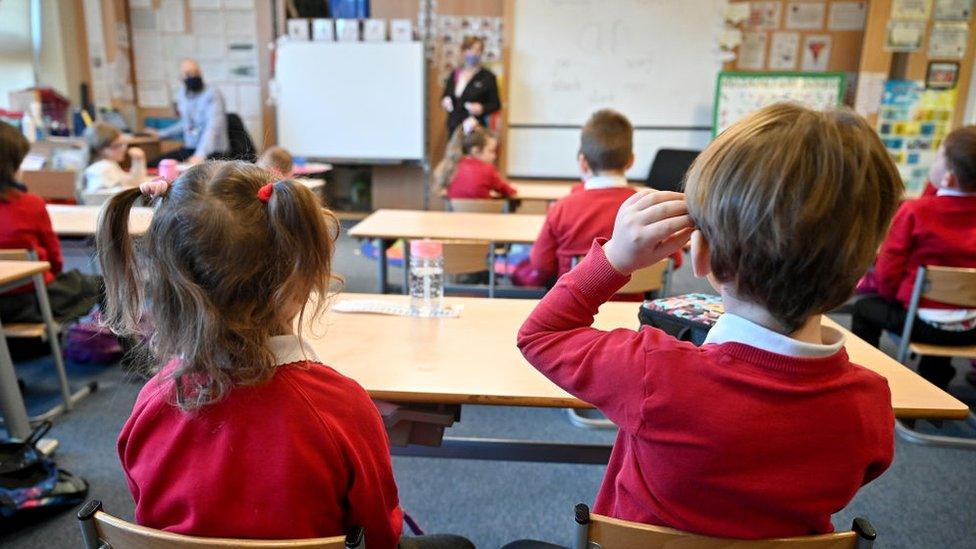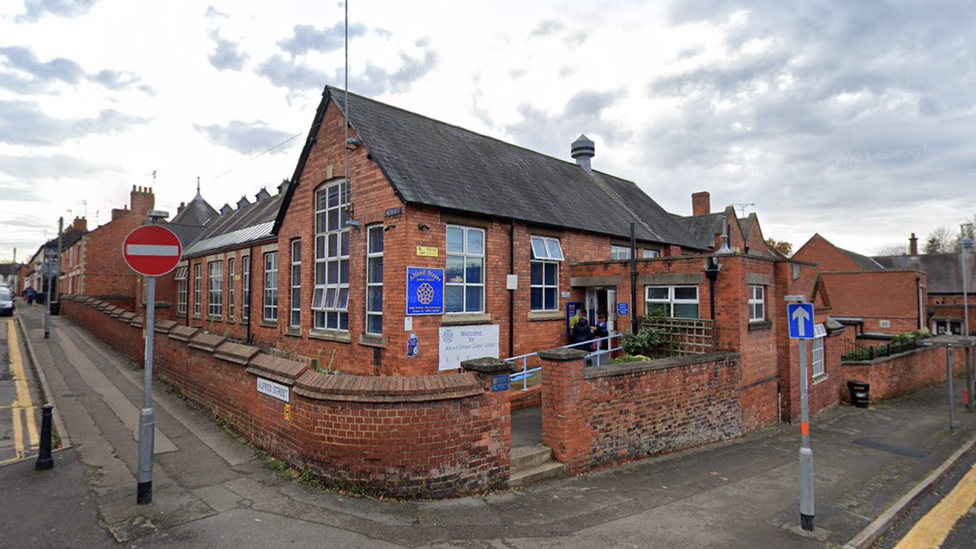Why Bedfordshire still has middle schools and the plan to scrap them
- Published

Academy schools are independent from the council and many have already switched to a two-tier system
Schools that used a three-tier system of education with lower, middle and upper sites, will be converted, a council said.
Central Bedfordshire Council confirmed that the country will move to a two-tier model of primary and secondary, after work was halted this year.
The independent ruling group paused the switch after taking control in May, as it only had "£48m of the £300m" needed.
Now the council said it remained committed to the transition.
They have posted an update on their website which detailed the progress of the change in specific areas across Central Bedfordshire.
Why does the area use both two-tier and three-tier schools?
Historically the area of Central Bedfordshire had used a three-tier system, made up of lower, middle and upper schools.
Most of the UK instead, operated on a two-tier system with primary and secondary schools.
A primary school caters for children between the ages of four and 11, compared with a lower school which taught children between four and nine before pupils move on to middle school.
Children in the three-tier system had to change schools at least twice, whereas those in two-tier only needed to move once.

There are a mix of education systems used in Bedfordshire
According to the council there were 1,400 middle schools in 1983 and only 100 now, 14 of those are in Central Bedfordshire.
In recent years, many lower, middle and upper schools in the area changed the age range they catered for, which effectively made them primary or secondary schools.
The council said this meant the educational landscape in Central Bedfordshire is "mixed" with two-tier areas, three-tier areas and some areas that combine both.
Now the council has said it will invest £140m over the next few years to transition all three-tier schools in Central Bedfordshire to the two-tier model.
When will changes take place?
Changes agreed for schools in Biggleswade will continue to go ahead by September 2024.
However the transition to a two-tier model in Cranfield will now take place in September 2026 rather than 2025.
The council decided to delay the change to ease financial pressures by "several million pound."
Central Bedfordshire Council added it will continue to work with Bedford Borough Council and the Chiltern Learning Trust to find school places for all children entering Year 5 in September 2025.
Some of those children will be on track to attend Marston Vale Middle School as it undergoes its transition to become Stewartby Primary School.
A 2025 rollout has also been halted in the Shefford and Stotfold areas as the number of expected children who needed places has decreased, due to a lower birth rate.
The council said it will work with school leaders, to develop a new plan for the area, that insured they do not create "too many" school places that it said could have a negative impact on children's education.
In Houghton Regis the council opened Houstone School, the first new secondary built in the town by Central Bedfordshire Council.
The council has plans for a new school to serve the emerging Bidwell West development area of Houghton Regis, however this will not take place by September 2025 due to current pupil forecasts.

Follow East of England news on Facebook, external, Instagram, external and X, external. Got a story? Email eastofenglandnews@bbc.co.uk, external or WhatsApp 0800 169 1830
- Published14 July 2023

- Published7 September 2022

- Published6 September 2022
